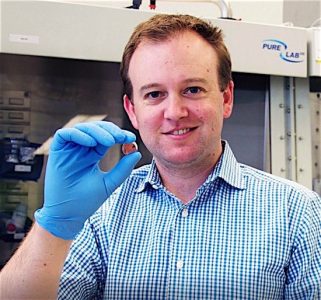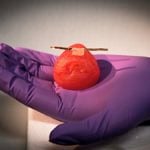
The search for better batteries has taken another step forward with the work of chemists at the University of Toronto. Their breakthrough uses the principle of biomimicry to create a more environmentally benign battery than the regular lithium-ion batteries in common use. For the first time, the scientists have used a bio-derived polymer derived from vitamin B2 as the cathode in a new type of battery that could have widespread use in consumer electronics. The battery is similar to high-energy lithium-ion batteries, but the bio-derived electrode is cheaper to make and less environmentally harmful than metals such as cobalt, which are typically used.
The associate professor of chemistry at the University of Toronto who led the research, Dwight Seferos, explained that the material used in the battery’s cathode is created from vitamin B2 that originates in genetically modified fungi. As often in scientific breakthroughs, trial and error played a major part. Seferos and the other researchers happened upon the material while testing a number of other polymers. They hit upon the B2-derived polymer as the right material for their purpose after several attempts.

Their B2 compound, whose source material, Seferos said, is safe enough to eat, can accept two electrons at a time, giving it a higher capacity and ability to accept multiple charges, than many other available molecules. The ability to store energy in a vitamin-derived plastic, rather than a metal, makes the U of T battery truly “green.” Biologically derived organic molecules, says the abstract to the article published in the journal Advanced Functional Materials, are a cost-effective, environmentally benign alternative to metal-based electrodes.
The prototype battery is about the size of a hearing aid battery, has high capacity and high voltage, according to Seferos. The goal is to create more powerful, metal-free batteries. The U of T work provides a “foundation” for the use of bio-derived polymers in “sustainable, high-performance lithium-ion batteries.”































